WEEasked some simple questions — and your neighbors, friends, co-workers, acquaintances, even some strangers, answered. Get to know them a little bit better with our fun series, “WEEasked.” Look for it a couple of times a month, most likely on Mondays. Do you have someone you’d like to see featured? Send us an email to weelunk@weelunk.com, and please be sure to put WEEasked in the subject line.
There is something comforting about Dr. William Mercer.My mom and dad lived out their last years at Peterson Healthcare and Rehabilitation Hospital and the Continuous Care Center, respectively. I’d see Dr. Mercer come through the doors, and even though he wasn’t either of their doctors, he was always a welcome sight.
I bet there are many in the Ohio Valley who feel that way.
The homeless population probably would agree, thanks to Project HOPE. And how about all the kids that get to participate in the “Joe Too Cool to Smoke” programs? Ditto for them, I suspect.
And speaking of Snoopy, raise your hand if you’re glad Dr. Mercer is DOCTOR Mercer and not Bill the CARTOONIST.
A cartoonist? Yep. At the age of 10, that’s what he wanted to be. (Watch this YouTube video), and you’ll see some examples of his early work. Pretty good, I’d say!) In fact, he wanted to be a cartoonist so much so that he signed his works “Charles M. Schulz II” — after the Peanuts cartoons creator.
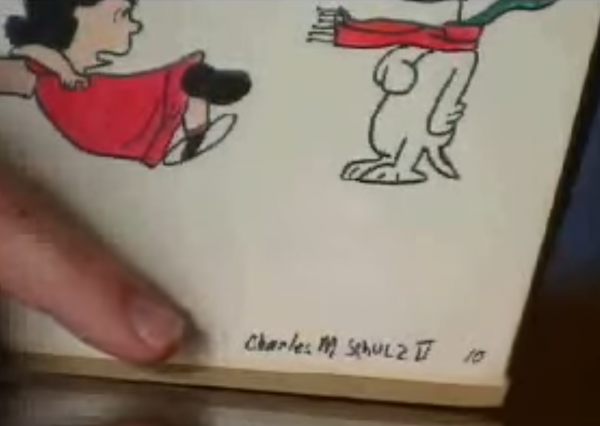
But, Patch Adams got the best of him, rather than Charles M. Schulz. In the video, you’ll see that Dr. Mercer approaches medicine in a similar vein — with humor — just as Patch Adams did. He’s got a few of his examination rooms decorated with his Peanuts paraphernalia, which Dr. Mercer believes helps to put his patients at ease.
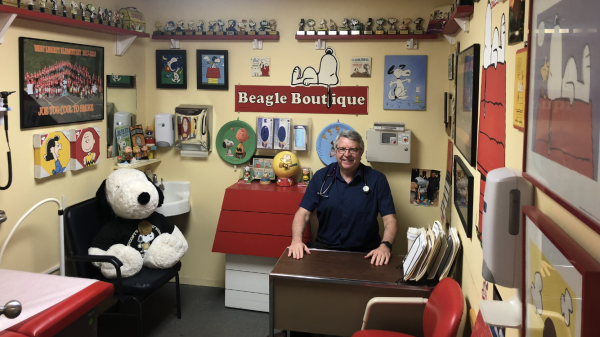
So, while he chose the practice of medicine over creating cartoons, he certainly hasn’t let go of his love of all things Peanuts.
In fact, let’s hope he doesn’t let go … thanks to Jeannie Schulz (Charles’ widow), Dr. Mercer will be a Snoopy balloon handler in the Macy’s Thanksgiving Day parade in November!
Along with serving as the Wheeling-Ohio County Health Officer, Dr. Mercer is a family physician employed by Wheeling Hospital, and he is the medical director of Peterson Heathcare and Rehabilitation Hospital. He’s on the board of directors for Youth Services System Inc., the TB Association of Ohio County, the Greater Wheeling Coalition for the Homeless, the Board of Governors for West Liberty University, and he’s an ex-officio member of Wheeling Health Right.
Dr. Mercer and his wife, Gigi, have four children, Chris, Steve, Andy and Taylor, and two daughters-in-law, Bre and Teal.
Here’s what Dr. Mercer answered when WEEasked:
How and why did you get involved in Project HOPE? And can you explain a little bit about the project?
I have been the Health Officer for the Wheeling-Ohio County Health Department for over 20 years, and one of the things I recognize that was public health was homelessness, so I joined the Greater Wheeling Coalition for the Homeless where I got my first exposure to that.
On a trip to Philadelphia to the American Public Health Association’s annual meeting in 2002, I decided one morning to get up and look for some homeless people, and I found a person who was huddled around a manhole cover where the steam was coming out —that was how he was keeping warm. I decided to take a picture so I could show people back in Wheeling what some of it looked like in Philadelphia. Back then, we had cameras that made a click when you took a picture; and when I did, the man jumped up, ran over to me and hit me. Luckily, I was bigger than him, and I wasn’t hurt, but it made me realize I didn’t know anything about homelessness, and I was going to try to improve on that.
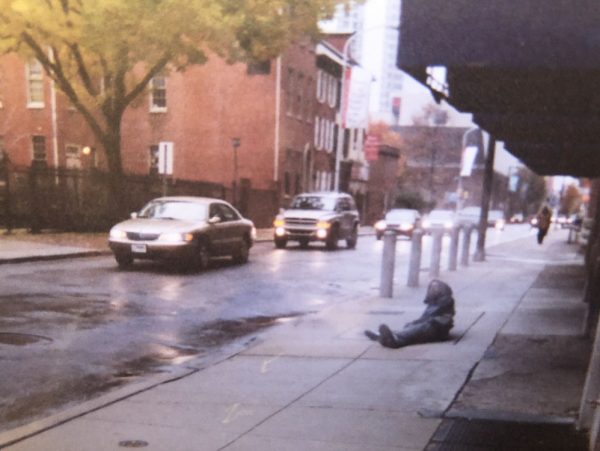
Then in 2006, I was in Boston for the same annual conference. While in a lecture room, I was sitting next to Dr. Jim O’Connell, who I didn’t realize was head of their street medicine and one of the pioneers of street medicine in the United States. He asked me to come out with him that night to make rounds. Late that night, I got to see people living in cardboard boxes, under bridges and even behind Tom Brady’s house at that time. That experience made me want to bring street medicine to Wheeling, though on a smaller basis.
The Wheeling Coalition with Lisa Badia, Kim Knight and Becky Rodocker, who was from the Soup Kitchen, would go out and try to mimic what they were doing in Boston. Plus, we also had had the opportunity to go down to Morgantown where they had a “MUSHROOM” Program that was run by the medical students, which was similar. At that time, we would maybe go out monthly, but we were never very consistent.
Then five years ago, John Moses, executive director of Youth Services System Inc., and I were talking about their Winter Freeze. He was hoping to get a clinic in the evenings when they were at the facility. He was able to arrange one of his then-workers, Crystal Bauer, RN, to help come up with a plan on how we could do a clinic and continue street medicine. Once that started to take off, we were more organized.
We then called ourselves Project HOPE, and thanks to Crystal Bauer’s organizing skills, we were now going out weekly. We had two medical groups — one headed by me and one by Dr. Tom Wack — plus many, many volunteers. Wheeling Jesuit was very involved — Dr. Maryanne Capp had a lot of her students come with us for an invaluable learning experience. Students from West Liberty University also were involved. We would often take some of the immersion groups that Kate Marshall would send from the House of Hagar.
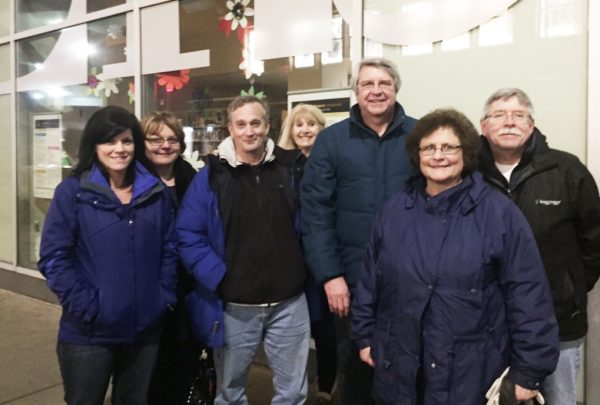
At this time, I thought it might be a benefit to become under the umbrella of the Health Department. I asked our administrator, Howard Gamble, if we could make that happen, and he did. There were definitely advantages: we had access to a lot of vaccines and other medical equipment.
We then were approached about an anonymous donation that would help us have a clinic at the Winter Freeze, which really made a huge difference. Now we had an extremely nice exam room that was very private, and we could examine our patients there just like anyone else going to their own private physician. Because of that, we would often see more patients who were willing to trust us. We were also involved with Kathy Brown through Wheeling Health Right. At that time, they sent Amanda Cummins, PA, to come out with us. One of our main goals with Project HOPE was to get our homeless into primary care providers such as Wheeling Health Right, Dr. James Comerci’s Family Practice Residency through Wheeling Hospital and myself.
We also tried to pattern ourselves after Dr. Jim Withers in Pittsburgh who actually is the one who set up the first street medicine program and is now head of the International Street Medicine Program. We have been to Pittsburgh to review how they do street medicine, plus he has also come down to critique our program.
Last year, our group was asked to attend the International Street Medicine Program in Rotterdam, Netherlands, where our nurse, Crystal Bauer, was able to attend and represent our group.
Also last year, one of our local churches on Wheeling Island, New Life United Methodist, with the Rev. Ernest Watkins and his congregation, was able to donate $100,000 so we could have a mobile medical unit. Crystal and I had spoken to them about our needs, and they amazingly came through with this generous donation. We are now in the final steps where we have bids out for what the mobile unit would be like and are getting ready in the next week or so to get that started, although it probably will take about eight months to build this unit.
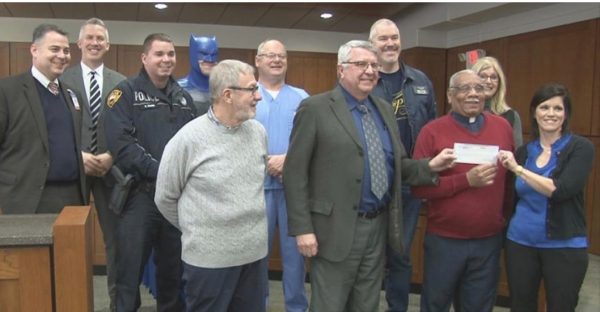
So, we have come a long way from maybe going out once a month to now weekly visits on the streets, plus we have also been able to establish a clinic at Catholic Charities on Saturdays and also help with a clinic at the Soup Kitchen on Wednesdays in conjunction with Health Right.
When we do go out on rounds, whether it is Tuesday night during most of the year or Friday nights when the Winter Freeze is functioning, we go to the camps along the creek, the riverbank or under the bridges and offer them primary care. We have been able to give Hepatitis A vaccines, flu shots, etc. We are able to do some minor care, such as taking care of an abscess or a case of bronchitis or supplementing someone’s medicine for blood pressure; but again, our main goal is to get them into primary care. Even though we are a street medicine program, there are a lot of other issues that come up especially with the problem we have been having with addiction. We try to guide them to recovery with the agencies that are around here to do that. We also do needle exchange when we are out.
Sometimes, we are able to help with housing issues by referring them to the Greater Wheeling Coalition for Homeless. When there was an outbreak of Hepatitis A in southern West Virginia, we were able to take Hepatitis A vaccines with us and give them on street rounds because that population had a higher risk of developing Hepatitis A. It has been our consistency that has built up their trust of us. Also, when we go out on rounds, we go to our two shelters, Northwood and Salvation Army, where we have established medical exam rooms.
What does Project HOPE do for YOU?
Certainly, it has humbled me to the fact there is this very vulnerable population right in our community and actually in our backyard. There is just something about trying to take care of a person with no home and trying to manage their acute and chronic illnesses.
How did you become enamored with Snoopy?
Back when I was about 10 years old, I always wanted to be an artist and drawing the Peanuts Characters came easy, so I kind of started there. But, I obviously realized I was not going to become a cartoonist, so my attention turned to medicine. After I got in private practice, I had a pediatric room that I decorated with all the Peanuts characters; and from that point on, the patients just started to bring me paraphernalia of the Peanuts gang. Actually, because I accumulated so many collectibles, that was one of the reasons I moved from my office on 12th Street to the Wheeling Clinic where my whole office now is pretty much decorated with Peanuts characters.
What gave you the idea to connect Snoopy with Joe Too Cool to Smoke?
Back in 2005 as the Health Officer at Wheeling-Ohio County Health Department, we had a vigorous battle to change our Clean Indoor Air Regulation where, other than gaming, was protected from secondhand smoke. Then one day soon after that, I just happened to see on the internet they were honoring Charles Schulz with statues of the Peanuts characters. It turned out that in 2000 when he died, they started to do this in St. Paul, Minnesota, where he had grown up. One year, they did Snoopy, then the next year Charlie Brown, then Lucy and then Linus. Then, it moved to Santa Rosa, California, where Charles Schulz had lived. That is when I saw on the internet at that time they were going to do another statue of Joe Cool. I thought we just got done doing the smoking regulation, and I wondered if they would let me do Joe Too Cool to Smoke. So, I called out there and actually got to talk to Craig Schulz, his son, because usually, they don’t let people do statements — they like their themes of Joe Cool as a San Francisco Giant or as a farmer, etc. — but Craig said he liked my idea, and he was going to let me do it. We actually got to do a WV PBS documentary about how we were able to accomplish that. (You can watch the nine-minute video here.) :
I was able to go out to Santa Rosa. The State of West Virginia and the West Virginia Department of Tobacco Prevention were able to help me with this project as was the Wheeling-Ohio County Health Department. We were able to make Joe Too Cool to Smoke, and he stayed out in Santa Rosa for three months with the California Lung Association, and then we brought him back to Wheeling where we did a kickoff at Wheeling Jesuit with 600 fifth-graders from Ohio County and then-Gov. Joe Manchin plus the 17th Surgeon General Richard Carmona, who had written about how secondhand smoke was harmful. So once that was kicked off, we were able to go around to the schools to get kids not to use tobacco.
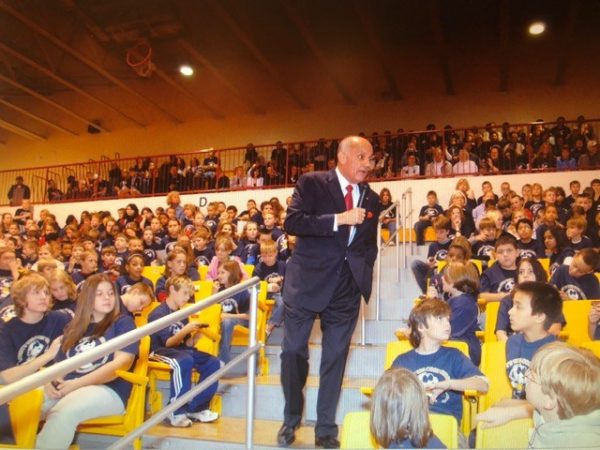
Interestingly enough, of the 100 statues of Joe Cool out in Santa Rosa, a company called Westland made figures of nine of those, and they picked mine to be one of those nine. On our first statue, his foot was left blank, and we had a contest to see who would win the best tobacco prevention drawing. The reward would to be on the foot of the figurine. We had two weeks to get this done so probably it was the first time there was ever an “emergency art” contest, but we were able to do it.
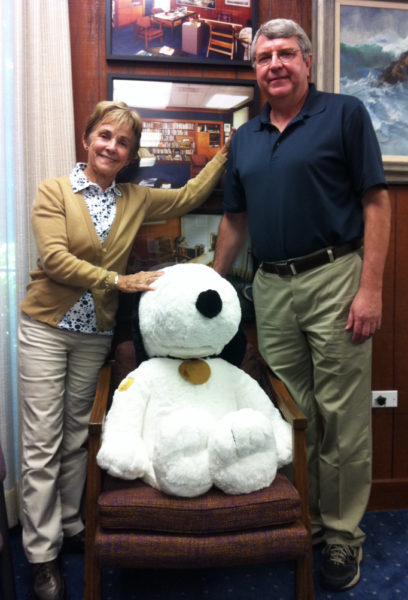
Since then, we have a group who volunteers their time. Nancy Labrosse, who was a dental hygienist for the Ohio County Schools, initially helped because we also wanted to get kids not to use chewing tobacco. Now, Courtney Huffman from Ohio County Schools helps. Ironically, if you remember Joe Garagiola, a former baseball star and an announcer for baseball — he had been good friends with Charles Schulz and got Charles Schulz to write a couple of cartoons about chewing tobacco.
So, Jeannie Schulz, who runs the Peanuts organization, had him call me to see if we could do his program with ours, and he did, and we did use his program — we still do. Our other regular group members include Howard Gamble who is the administrator for the Wheeling-Ohio County Health Dept. and helps transport Snoopy to the schools, and he educates on Clean Indoor Air; Crystal Bauer, who is also with the Wheeling-Ohio County Health Dept., and uses the pig lungs demonstration to get the children to be aware of the hazards of what smoking does to the lungs; Claudia Raymer with the Ohio County Family Resource Network, who shows the children what is in tobacco; and Dr. Comerci’s Family Medicine residents from Wheeling Hospital who educate on the hazards of vaping.
Through all this, I have gotten to know Jeannie Schulz pretty well. Every time we do a program, I have to have permission because the copyrights to the Peanuts characters are extremely closely watched, and they really make no exceptions, so I feel very fortunate they have seen my program as worthwhile and have let me do this since 2007. Although Jeannie Schulz is 80 right now, she is in great shape and was an avid tennis player; and actually, her doubles partner, Evie Tegley, at the time I went out to visit her, had been in my father’s band. Loran Mercer, my father, was the director of the Warwood Band for many years — how ironic is that?
Then this past Thanksgiving after watching the Macy’s Thanksgiving Day Parade and Snoopy in that, I asked Mrs. Schulz if she could get me a contact at Macy’s to see how you become a balloon handler. I told her it was kind of like a bucket list thing, and I know most of the time you have to be a Macy’s employee. But she said she was going to do it again this year, and she put my name in with her group. So, I have the countdown to the Macy’s Parade. If you are a Peanuts lover, you know this is the epitome of what you could do.
The other thing we have accomplished was the Wheeling Nailers Organization through Howard Karnell had asked me if they could do an Education Day using Joe Too Cool to Smoke, and I was excited about doing that. But, I also remembered we had another statue that had been at the Peterson garden for 10 years, because when I had talked to Joe Garagiola, we had actually won another statue on eBay that had been at the Mall of America, and he was going to be Joe Too Cool to Use Spit Tobacco. But, the powers above Mrs. Schulz said, “Dr. Mercer, we think you have done enough, be happy,” so that was it for Joe Too Cool to Use Spit Tobacco. So, he had been sitting in the garden for 10 years. But when the Nailers asked about the Education Day, I thought maybe I could get Mrs. Shultz to give me permission to change him into Joe Nailer Too Cool to Smoke, and she said yes.
So in November, with over 5,000 kids at WesBanco Arena for a Nailer Hockey game, we unveiled the statue that is permanently at WesBanco Arena in the lobby, although he will go out for special events. But at that event, we were able to give 5,000 T-shirts and 5,000 sunglasses out plus do an educational program on the hazards of tobacco — especially now that we are seeing so much vaping in the schools.

So as you can see, I have tried to incorporate tobacco prevention with Snoopy and actually with our homelessness, where we have gone to our shelters. With our pig lungs, we have done demonstrations to try to get those whom we serve not to use tobacco. Unfortunately, almost 90 percent still use tobacco.
Tell us something that would surprise our readers about you.
I love to play basketball. That is my release. I play at the Chambers YMCA twice a week in a league. Also, I don’t hate smokers but I do hate the tobacco companies that make a product that makes it extremely difficult for people to quit when they want to.
What book is on your nightstand or e-reader right now?
It would be Professionalizing Medicine about Dr. James Reeves. He was our first Health Officer here at Ohio County, and I am the 25th. It is amazing how he helped shape a lot of American medicine. He helped establish the American Public Health Association and West Virginia Medical Society. He also influenced his niece, Anna Reeves Jarvis, who was the founder of Mother’s Day. I just find him fascinating back in that time era. The author of the book, John M. Harris, actually came here to Wheeling and talked to me and to Kate Quinn, who was very involved in our city’s history. He came here to make sure his book was as accurate as it could be. I had the honor of introducing Dr. James Reeves when he was inducted into the Wheeling Hall of Fame.
What is your wish for Wheeling
I would like to see Wheeling become 100 percent smoke-free in all work places with no exemptions.


